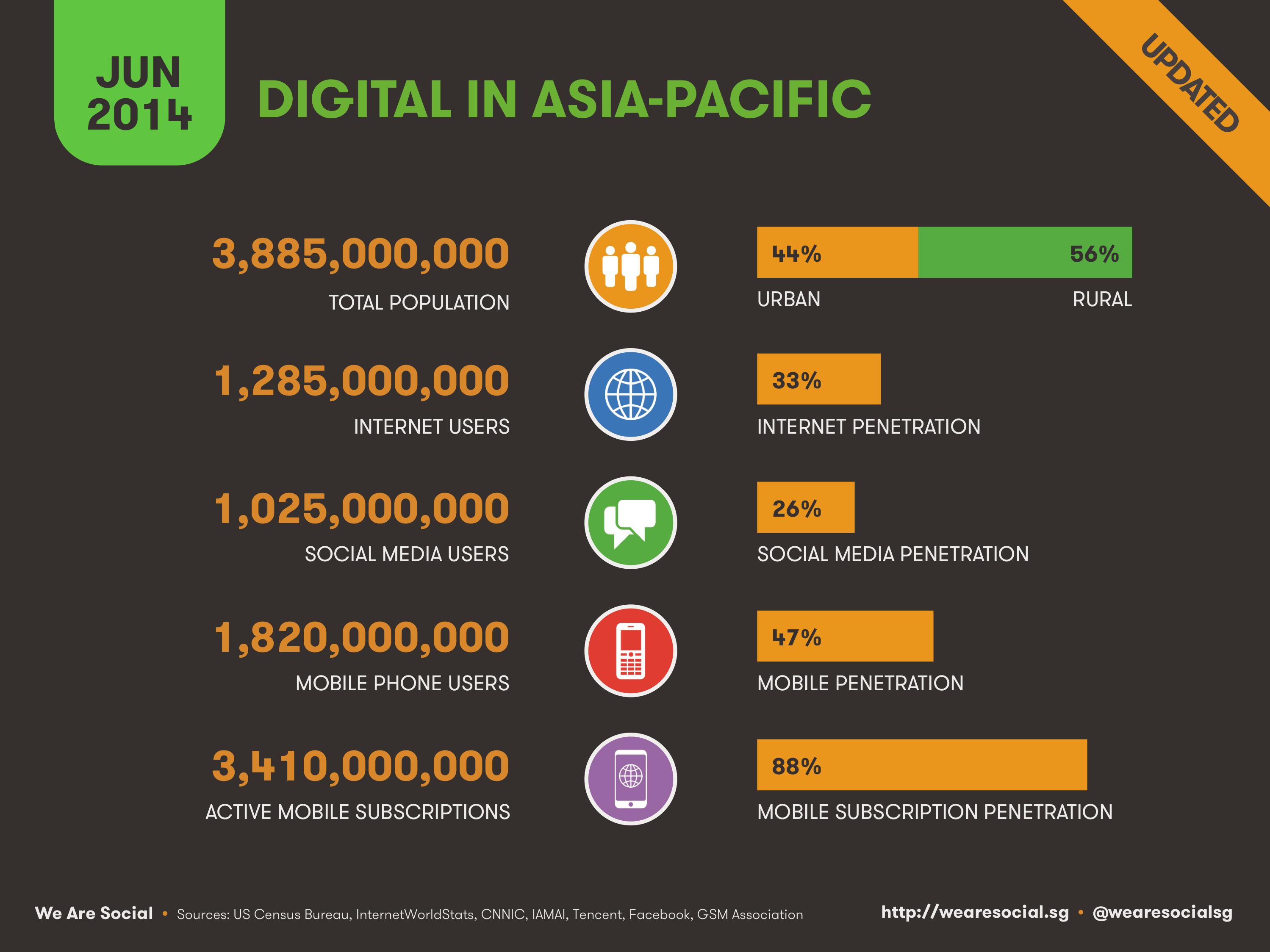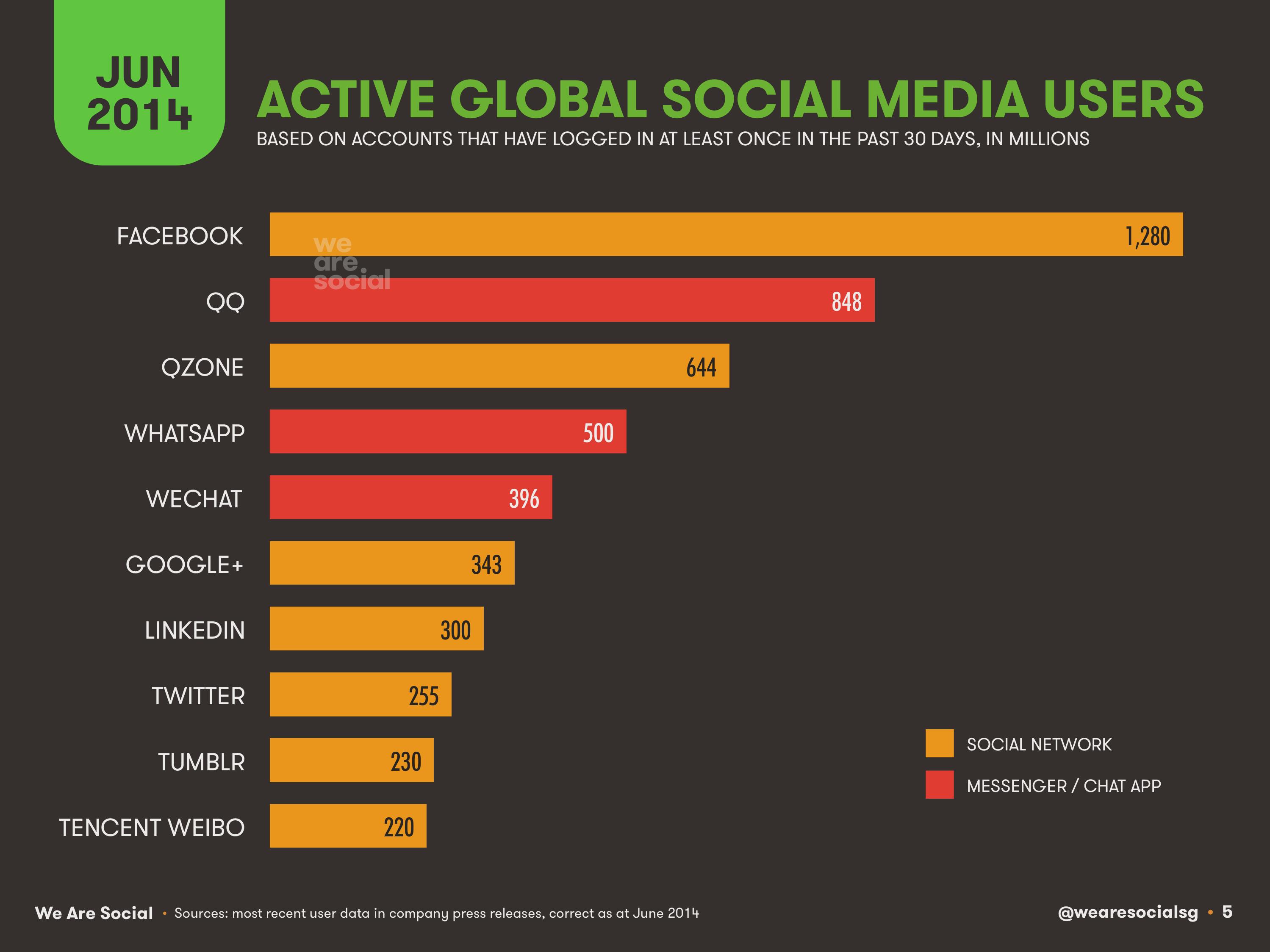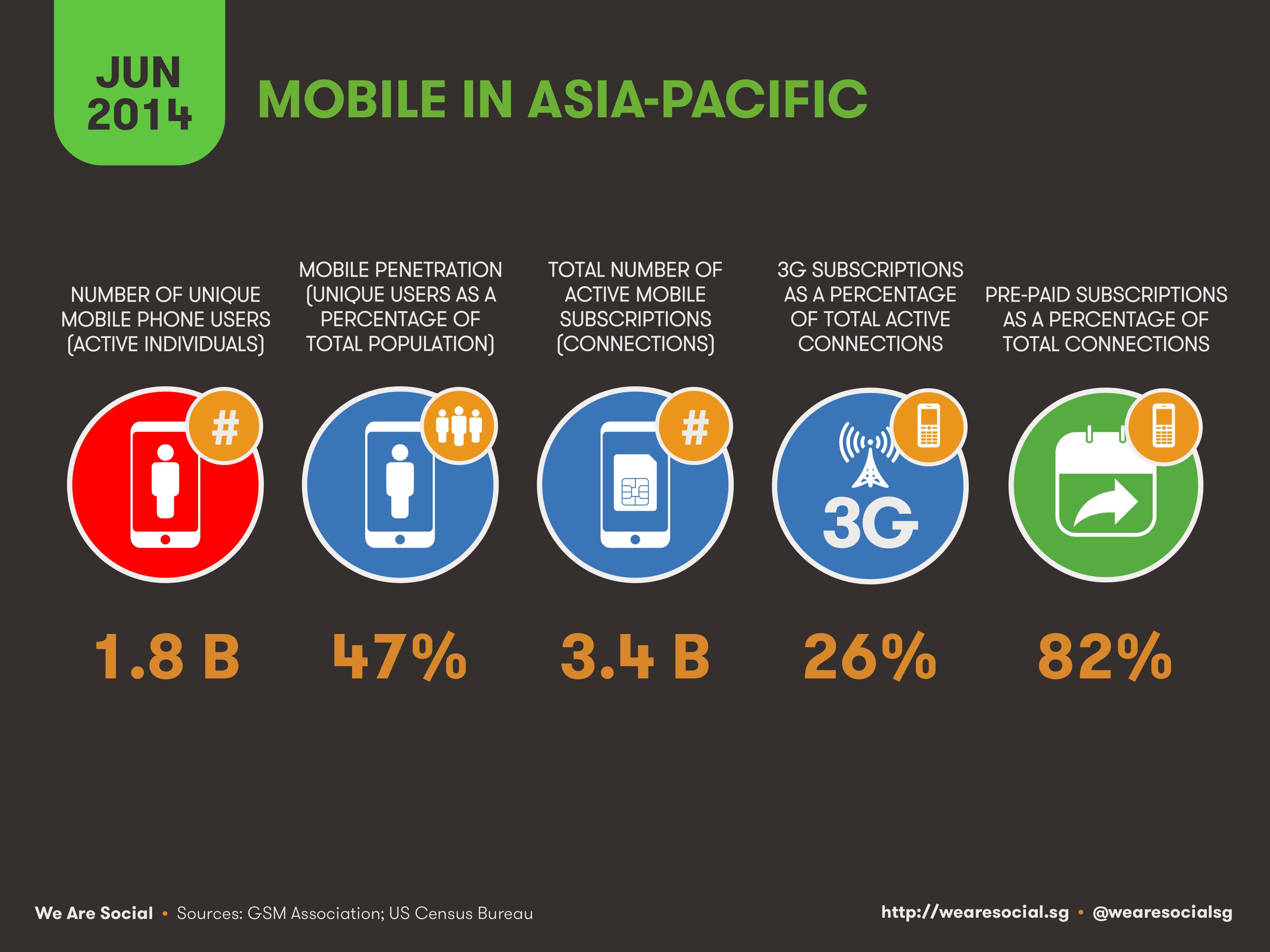More than 1 billion people in Asia have used social media in the past 30 days, and the numbers are still growing steadily.
This connected, vocal audience presents opportunities that marketers won’t want to miss, but social success in Asia requires a different strategy to the one marketers might normally adopt in the US or Europe.
So how can marketers get social ‘right’ in Asia? The answer lies in the 6Cs of Social.
One-third of Asia’s population is now online, with more than one-quarter using social media in the past 30 days. Almost half of the region’s population now owns a mobile phone.
1. Conversation
There are hundreds of different social networks in Asia, all built around different needs, interests, and technological functions. They all have one thing in common, though, and that’s conversation. Without conversations, social media aren’t social. And for brands in social, it’s the conversation that really matters. Conversations allow brands to become more ‘human’, enabling them to become something more than a straightforward product or service. But managing a ‘regional’ conversation in Asia poses a number of challenges.

People around APAC speak more than 2,000 languages, and even if your audience understands English, they may not be comfortable – or happy – conversing in it. When it comes to social conversations, people prefer to speak the language that best allows them to express themselves. Even when they do speak the same language, there are invariably many different ways of speaking it – from the nuances of everyday slang to our constantly evolving ‘social’ vocabularies (think ‘LOL’). The key is to remember that successful communication isn’t determined by what you say; it’s determined by what other people understand.
Recommendation: spend some time listening to your audience’s conversations in social media, and adopt a style that makes it easy for them to converse with you.

2. Culture
Asia’s peoples are highly diverse, and this diversity can add significant complexity to the process of developing a unified regional approach. Firstly, people in Asia follow a wide variety of religions, each of which may impact how a brand needs to behave in social media. Marketers will need to keep track of myriad religious festivals and celebrations, while attitudes towards things such as alcohol, styles of dress, and even colours may vary dramatically from one culture to another.
Similarly, many Asian cultures are guided by the concept of 面子 – ‘face’ as it is commonly known in English – and as a result, they may exhibit less ‘social volume’ than their Western peers. Consequently, it may be more difficult to achieve high levels of audience interaction, which can impact organic reach and engagement.
Recommendation: make sure that your content development teams and community managers truly understand the culture of the people you’re trying to engage.
3. Content Neutrality
Qzone and Facebook still command the greatest number of active users in Asia, but most of the region’s social media users are active across multiple platforms. Chat apps like WeChat (Weixin), Whatsapp, LINE and Kakaotalk have exploded in popularity in recent months, while platforms like Weibo, Twitter and Instagram continue to grow too.
As a result, it’s important for brands to avoid putting all their eggs in one basket. Marketers need to create content that audiences will be able to transfer from one platform to the other, allowing people to continue the conversation on their own terms with their different networks. This approach will also help to avoid relying too heavily on platform-specific audiences. Social media users in Asia are quick to adopt new platforms, and marketers may find that the ‘likes’ or ‘followers’ they build in one platform quickly become irrelevant as audiences move on to the newest network or app.

China’s Tencent is responsible for 3 of the world’s top 5 most active social platforms – clear evidence that Asia’s social media users have adopted multiple channels.
4. Country Needs
Remember that social media is only ever a means to an end, and that it’s also only one tool in your marketing toolkit. It’s unlikely that your brand will be dealing with the same set of challenges and opportunities in each market, so you’ll need to adopt your approach to the brand’s local needs.
Much of this relates to the audience context in each market – for example, how much they know about the brand, or the specific place it holds and role it plays in the local landscape. Do you need to educate people, or just reinforce what they already know? Can you already harness ‘cultural equity’ like community in-jokes or evocative imagery?
You’ll also need to adapt your content and conversational approach to your brand’s specific needs for things like new launches or environmental factors (e.g. product shortages). Don’t forget that local legislation may also have a significant on your activities. Many countries in Asia have strict laws governing aspects such as product claims, competitions, or even whether certain products (e.g. alcohol) can be overtly marketed.
Recommendation: even if you’re aiming for a regional approach, ensure that it’s flexible enough that it can adapt to a variety of local needs.
5. Cellphones
Social media in Asia is almost always a mobile-first experience. 85% of Facebook’s users in the region access the service via mobile devices, whilst almost all 396 million users of WeChat - China’s hottest social platform – are mobile-only.
This mobility presents some great opportunities for marketers, whether it’s connecting with people when they’re actually using a brand, when they’re at the point of sale, or when they’re out socialising with friends. However, Asia’s mobile context differs considerably to the one in the West, and the region’s mobile-first environment isn’t without its challenges.
Firstly, data connections remain slow across much of Asia, with barely one-quarter of the region’s 1.8 billion mobile users able to access 3G networks. Meanwhile, more than 80% of the region’s 4 billion active mobile connections are pre-paid (versus 27% in the US and 42% in the UK), meaning that the cost of mobile data – and therefore of mobile internet access – is still an important issue.
As a result, marketers need to build carefully balanced content plans. High-definition video may deliver the ‘optimum experience’, but video streams or downloads will be too slow and too expensive for the average mobile user in countries like India or the Philippines, so be sure to incorporate simpler, static content too. Slow connection speeds mean brands need to deliver immediate value too; if the audience has any doubts about the relevance or utility of a brand’s post, they will scroll straight past it before the content even has a chance to load.
Recommendation: make sure all your content is tailored for a mobile-dominated consumption experience.

6. Communities
If you do need to take a regional approach to social media in Asia, try to avoid categorising your audience by country. Instead, look for the interests, motivations and attitudes that the people you want to engage have in common, and use these commonalities to define your audience.
People are drawn to other whom they feel affinity for, and when it comes to the borderless internet, this affinity is far more dependent on passion than it is on place.
Recommendation: define your audience around their shared motivations and passions, not their nationality.
Simon Kemp is regional managing partner, Asia, at We Are Social, a global social media agency that works with clients to build brands that are truly worth talking about. He is also the author of Social Brands: The Future of Marketing, a comprehensive guide for marketers who want to build engaging brands for today’s connected age. You can download Social Brands for free.
Read more from We Are Social in our Clubhouse.
